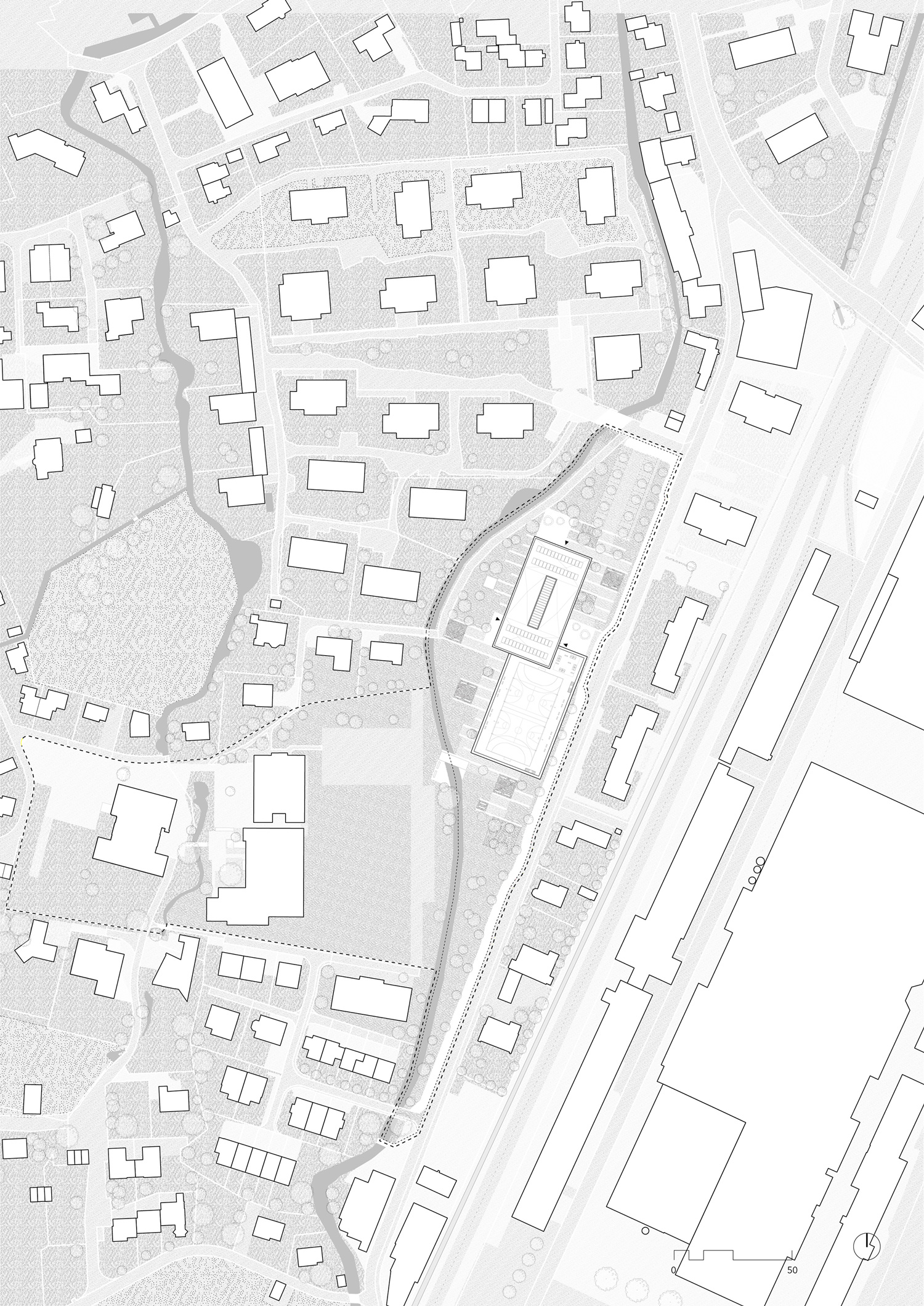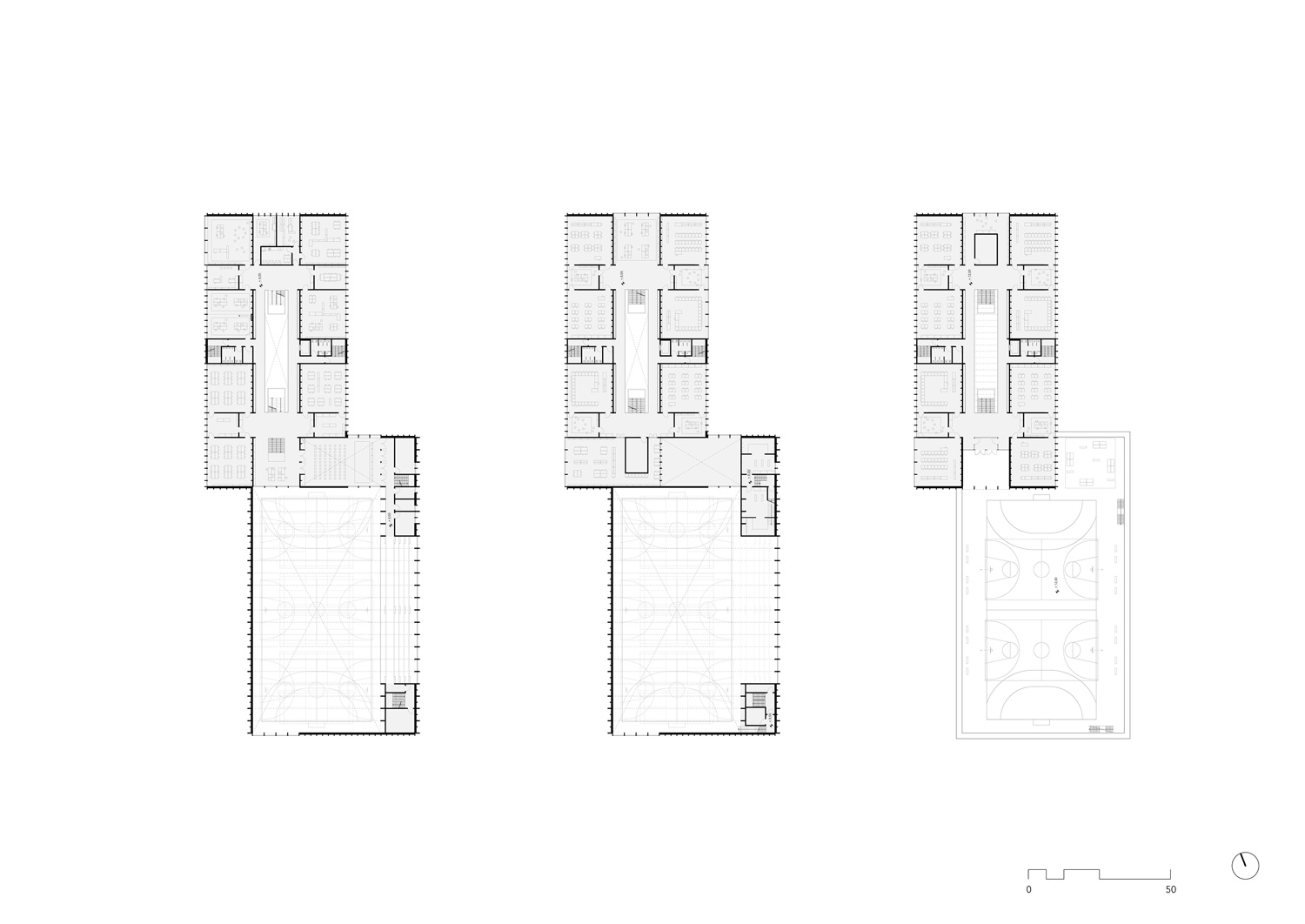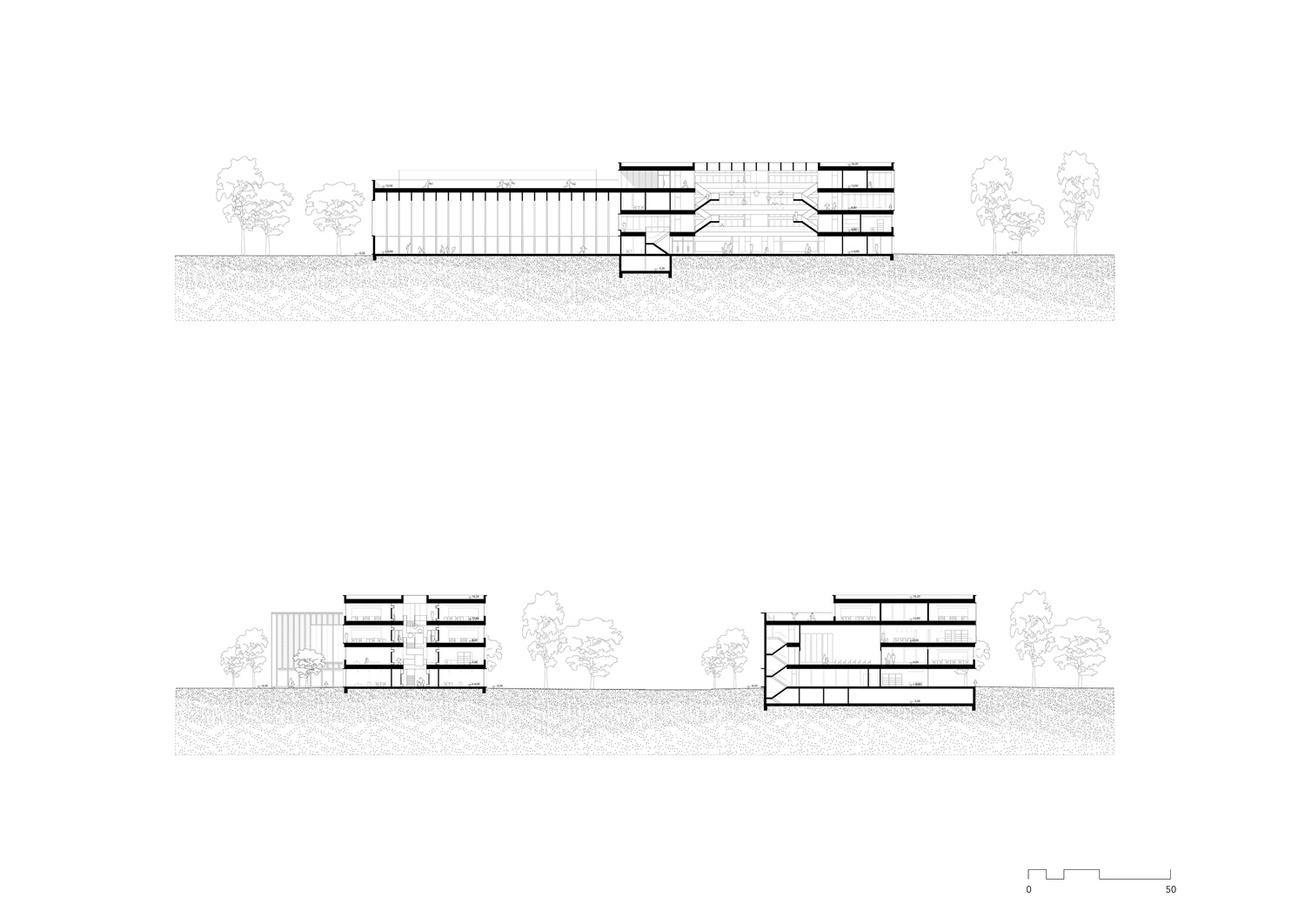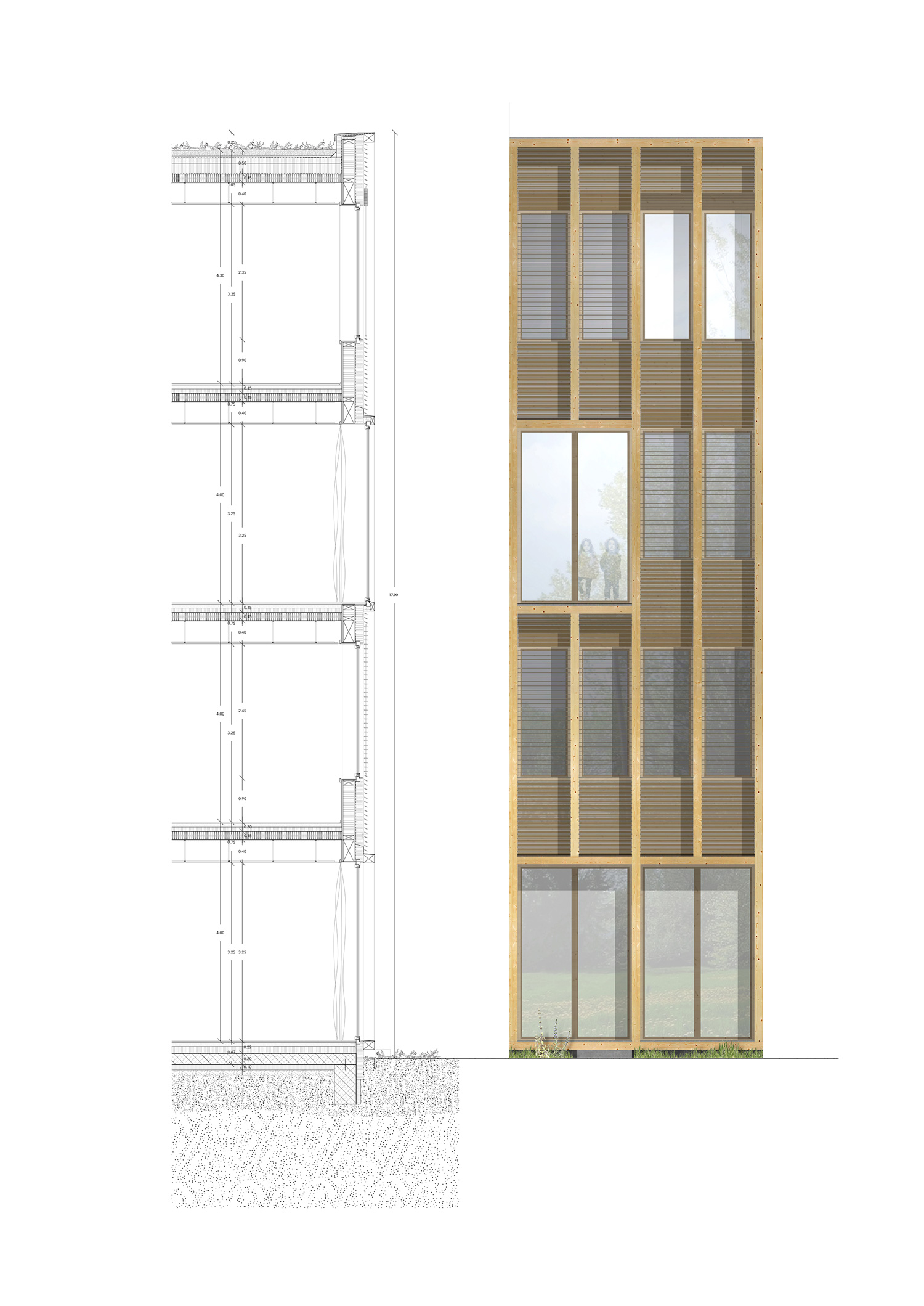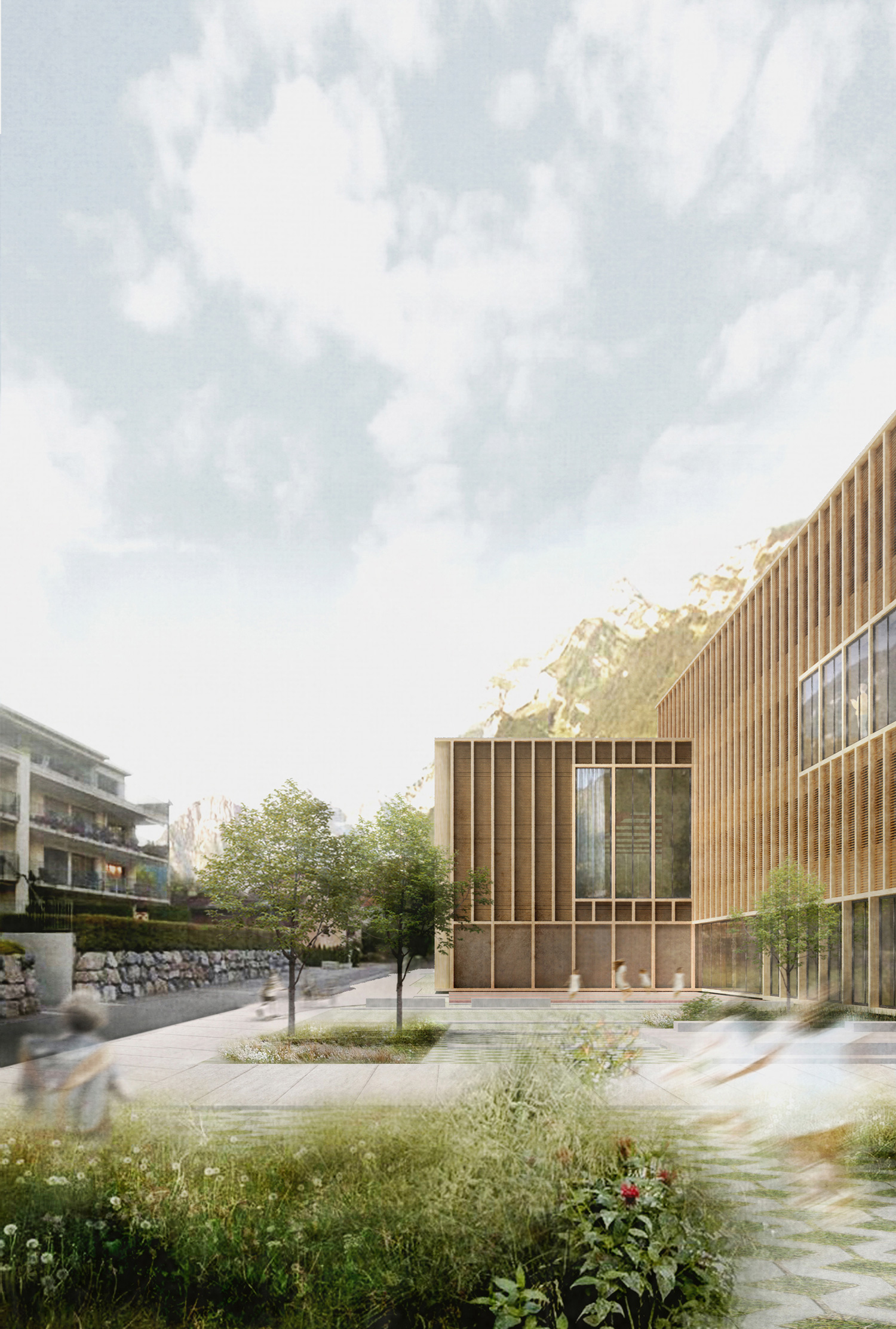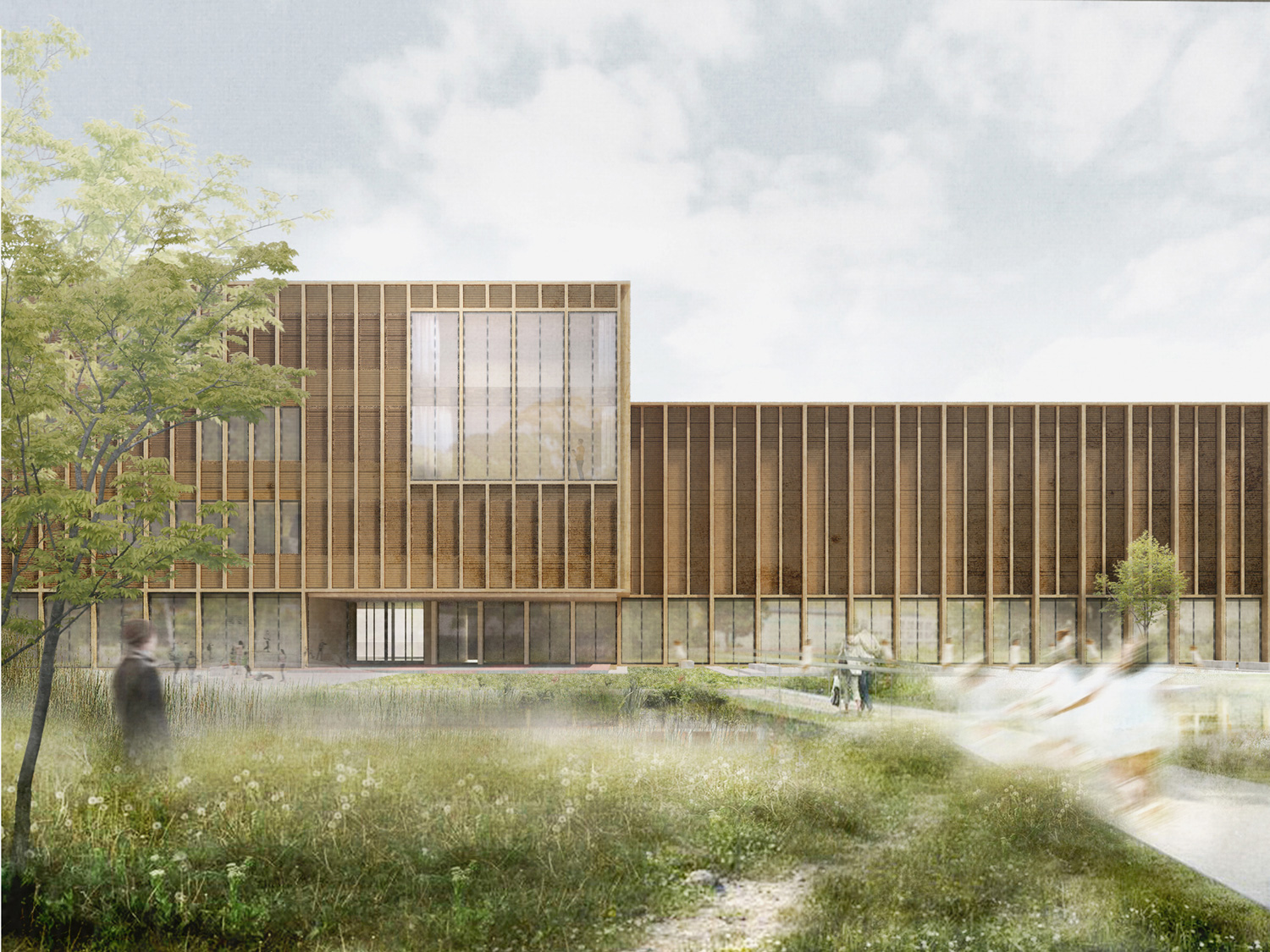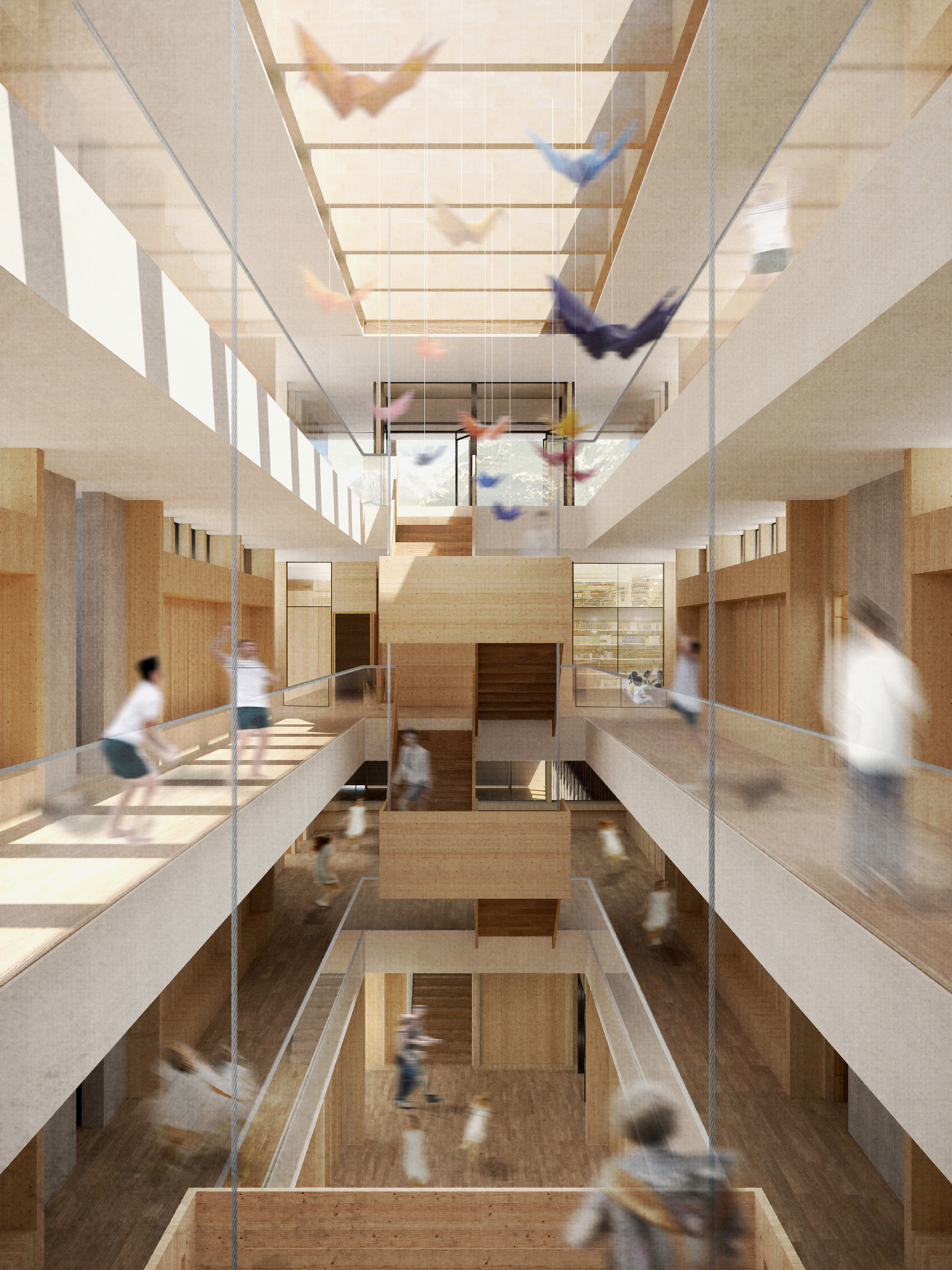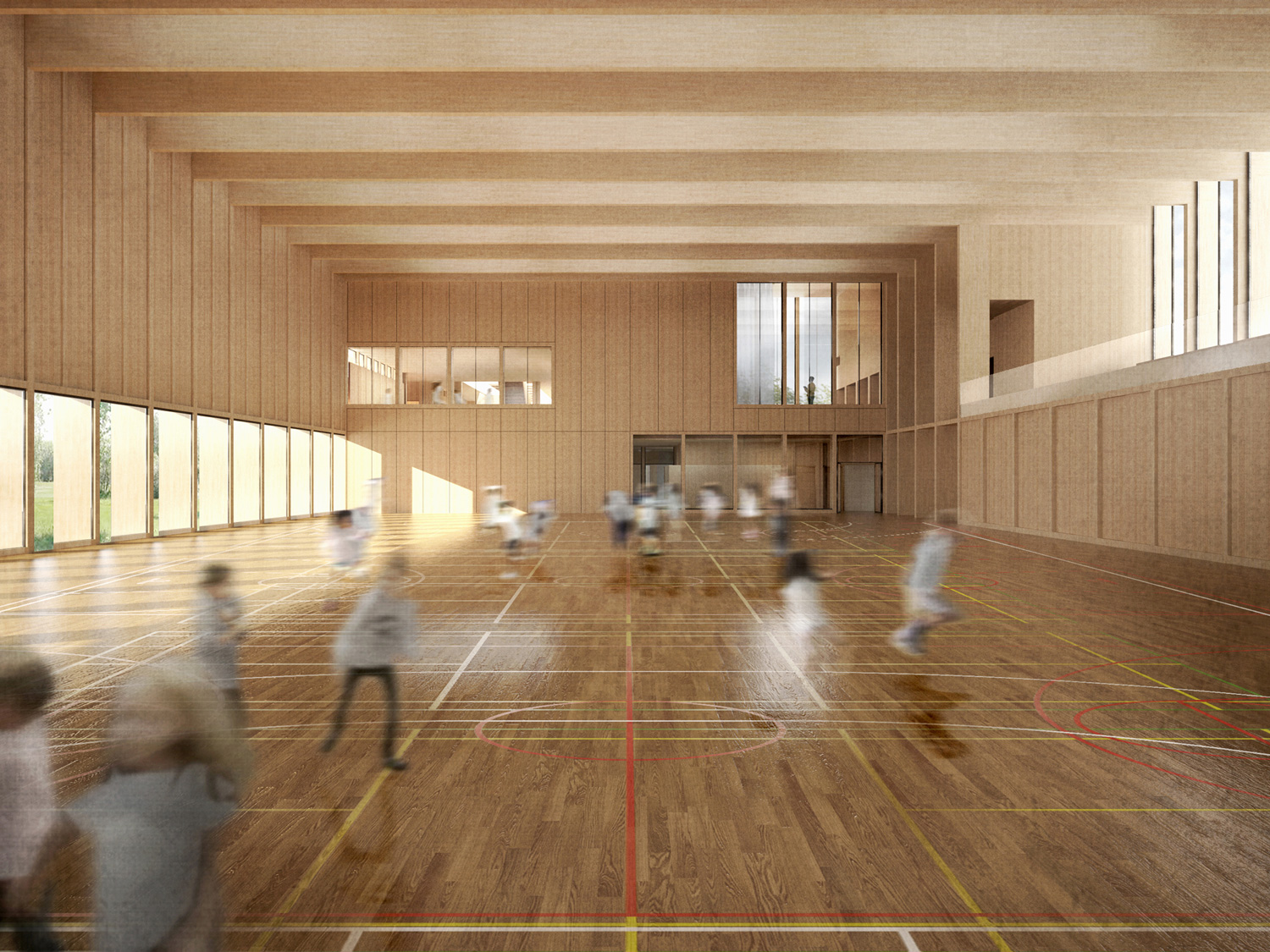2700-FGD-CH-2020
Client: Gemeinde Glarus Nord
Status: Competition (2020)
Location: Näfels, Switzerland
Coordinates: 47.096130, 9.067404
Climate: Humid subtropical, Temperate
Material: Wood
Environment: Urban
Visualizer: Wesualize
Scale: 4.764 ㎡ Medium
Types: Education, School
The functional distinction between school and sport hall allows the volume to react to the urban context:
The shape develops from the high dwellings north of the side towards the detached houses defining the periphery to the south. Simultaneously, the offset of the two volumes defines the two main entrances while dividing the plot into different exterior spaces, each attached to a certain interior function. Meanwhile, the point of permeation of the two volumes marks the central axis of access, a reminiscence of the former road partitioning the lot.
Conceptually, the proposition combines two volumes to their reciprocal benefit: A sport hall with a service wing and a primary school with a central circulation, merging the different functions and age groups of school and sport facilities with a central courtyard as its core – both a functional core and space of social interaction.
All functions open towards the courtyard and any function is visible from any other, which displays the different uses and increases the sense of community and readability of the edifice.
The central courtyard – both an allegory for communality and the development of a child from bottom/kindergarten to top/higher grades – on each storey is attributed with niches with different levels of intimacy and personalization: big niches for play and social interaction, wardrobe niches and niches marking the entrances to the classrooms.
Beside the interconnectivity of the different uses is it possible to use all main functions – primary school, sport hall and kindergarten – autonomously. They all have their individual entrance and required infrastructure.
Thanks to the timber skeleton construction and light dry construction walls defining the layout, the building is prepared for future amendments: The walls can be removed and relocated without interfering with the load bearing structure and according to the façade module.
The building is realized with a locally harvested spruce timber frame structure, laminated timber slabs and untreated spruce surfaces, thanks to their negative Co2 footprint a sustainable materialization that responds both to context and vernacular.
